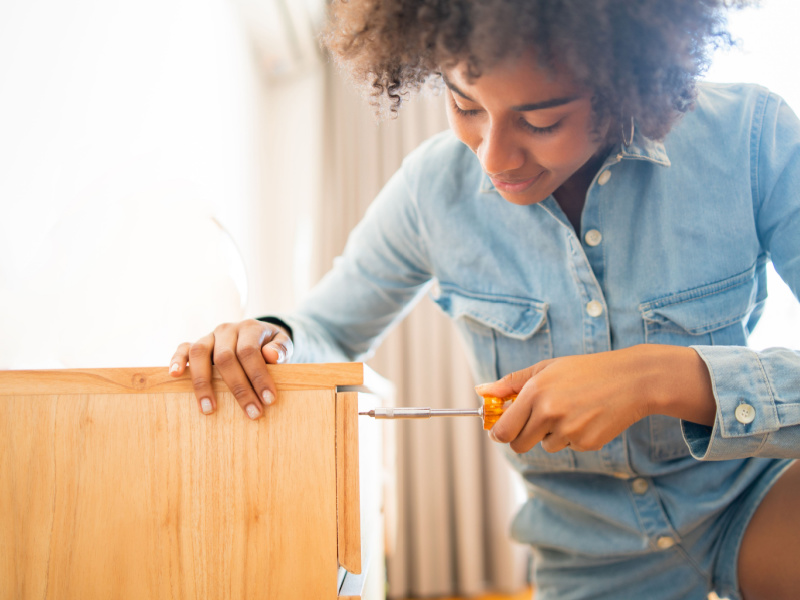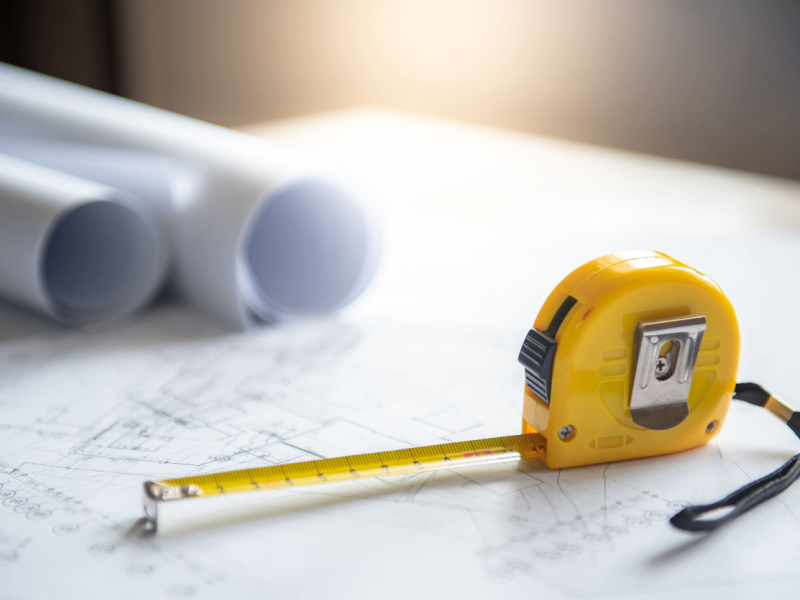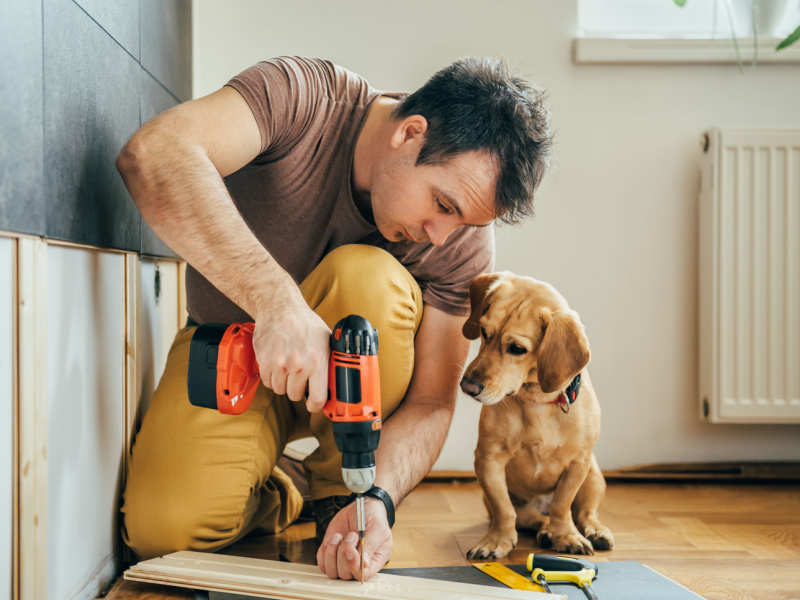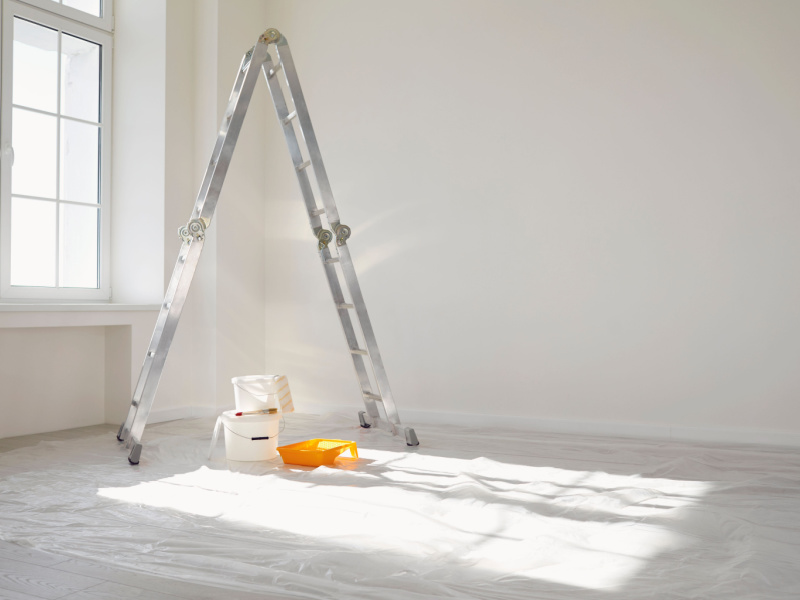Tools Every Homeowner Needs
Don't be anxious about your inadequate toolbox—we're here to help.

Don't be anxious about your inadequate toolbox—we're here to help.

Whether you’re looking to put together furniture, start a semi-complex DIY home maintenance project, or are simply LARPing as a weekend handyman, you’ll want to have the right tools for the job.
But what’s truly necessary for the average homeowner, or for someone who doesn’t have the time or budget for every obscure variety of wrench and hammer?
Let’s take a look at what to toss in your Home Depot or Amazon shopping cart. By the end of this article you’ll be able to fake it like a natural Bob Villa.

Screwdrivers are a fundamental tool for any homeowner, and there are a variety of types that will be useful depending on what you’re trying to do. While you might find things like Torx and Pentalobe screwdrivers at Home Depot, you probably won’t need those for general home repairs.
Consider buying the following, though. Remember you’ll want a range of different sizes for each (some will come in sets, which is convenient):
The average homeowner may not need to own all of the different types of pliers that exist, but it’s useful to have a few basic types. You might feel fancy showing off your Lineman’s pliers, but unless you’re doing serious electrical work, they might never leave your toolbox.
Here are a few types of pliers that the average homeowner may actually find useful to own:

All tape measures are created equally, right? Think again. Here’s a quick checklist of things to consider when going on your next Tape Measure Buying Adventure:
A utility knife, also known as a box cutter, is a handheld cutting tool that typically has a retractable blade, and it is designed to slice through everything from cardboard to drywall and insulation. It can also be used to open boxes, cut carpet and linoleum, and to strip wires.
A good utility knife should have a comfortable grip, a blade that locks securely in place, and a blade that can be easily replaced when it becomes dull. There are different types of blades available, such as snap-off blades, which allow you to easily change the blade when it becomes dull, and fixed blade, which is more durable and can be sharpened.
Alright, alright, we’ll try and refrain from any dumb jokes here. A, ahem, stud finder is a handheld tool that is used to locate the framing studs behind walls, floors, and ceilings.
You’ll be grateful for the stud finder if you’re trying to hang heavy objects such as shelves, pictures, or mirrors on the walls safely. Studs are typically located 16 or 24 inches apart, and they provide a solid and secure point to attach heavy stuff. By finding the location of studs, you can ensure that your shelves or other items will be securely attached to the wall and will not fall on your head.
A stud finder can also help you to locate the electrical wiring, plumbing, and other hidden components behind the walls. This can be useful when you’re planning to do home repairs or renovations.
Stud finders come in different types:

A cordless drill is a type of power drill that is powered by a rechargeable battery, rather than being plugged into an electrical outlet. You’ll use it to drill holes, drive screws, tighten bolts, and (with the right attachments) do stuff like sanding, polishing, and even mixing paint. Wheee!
Unlike corded drills, cordless drills do not require an electrical outlet, so you can use them anywhere. They are also lightweight and easy to handle, which makes them a great tool for DIY projects and home repairs.
When buying, consider the power of the drill, measured in volts. The higher the voltage the more powerful the drill is. Also, the battery life and how long it takes to charge are important factors to consider, look for a drill with a high-capacity battery and fast charging time.
An adjustable wrench, aka a crescent wrench, is used to tighten or loosen bolts and nuts on appliances, furniture, and other household stuff like cars and bicycles. It has jaws that can be adjusted to fit different sizes of bolts and nuts.
A good adjustable wrench should have a comfortable grip, a smooth adjustment mechanism, and jaws that can be adjusted to fit different sizes of bolts and nuts. The jaws should also be able to grip the bolt or nut securely without slipping.
A hex key, sadly, has nothing to do with undoing evil curses. Also known as an Allen key or Allen wrench, it’s a small hand tool that’s useful for driving bolts and screws that have a hexagonal socket. These keys are typically L-shaped, and they come in a variety of sizes to fit different types of hexagonal sockets.
Hex keys come in handy for furniture assembly, automotive repairs, and home repairs. They are commonly used to fasten or loosen bolts and screws that are used to hold things together, such as furniture, appliances, and bicycles.

You’ll be trotting out your trusty ladder for all manner of tasks, from changing light bulbs to cleaning the gutters. An adjustable ladder (sometimes known as an extension or telescoping ladder) could be a great option. It can be adjusted to different lengths, giving you access to high spots like the roof or second story window. You can adjust them to various angles.
They’re generally made of aluminum, so they’re light and easy enough to carry. (That said, they can get a little unwieldy when fully extended.) Make sure the ladder you buy is rated for the weight it’ll be carrying.
A level is used to check if a surface is horizontal (“level”) or vertical (“plumb”). It consists of a long, straight edge with a bubble vial or spirit level attached to it. The bubble vial contains a liquid and an air bubble, which is used to indicate when the surface is level by aligning the bubble with the lines on the vial.
Having a level lets you make sure that surfaces, such as walls, floors, and countertops, are level before installing or constructing anything on them. A level can also be used to check the level of a lawn, making sure that there are no high or low spots that might cause drainage problems.
It’s also useful when hanging photos, paintings, or mirrors, making sure that they are straight (without losing your mind trying to “just eyeball it”).
And of course, let’s not forget the most essential tool: Homeowners insurance that helps protect you and your property from life’s uncertainties.
Get your quote with Lemonade today simply by clicking the button below.
Please note: Lemonade articles and other editorial content are meant for educational purposes only, and should not be relied upon instead of professional legal, insurance or financial advice. The content of these educational articles does not alter the terms, conditions, exclusions, or limitations of policies issued by Lemonade, which differ according to your state of residence. While we regularly review previously published content to ensure it is accurate and up-to-date, there may be instances in which legal conditions or policy details have changed since publication. Any hypothetical examples used in Lemonade editorial content are purely expositional. Hypothetical examples do not alter or bind Lemonade to any application of your insurance policy to the particular facts and circumstances of any actual claim.